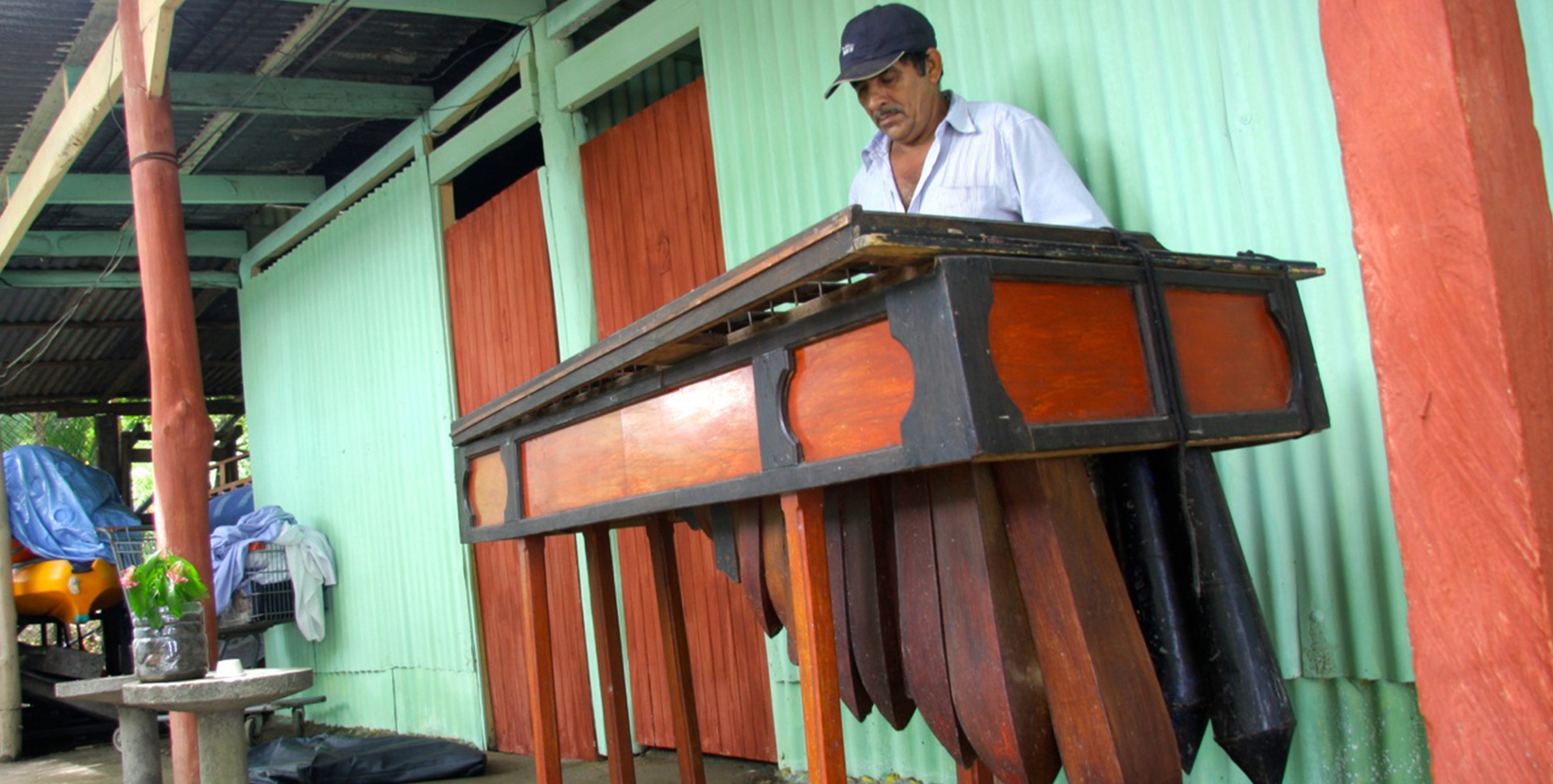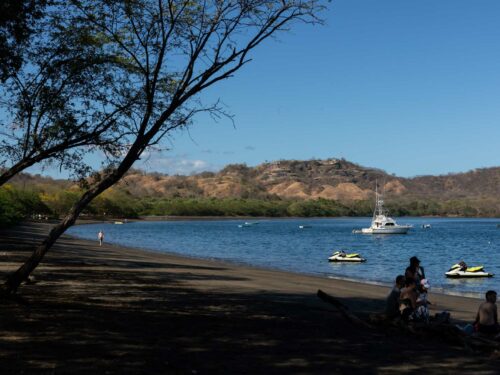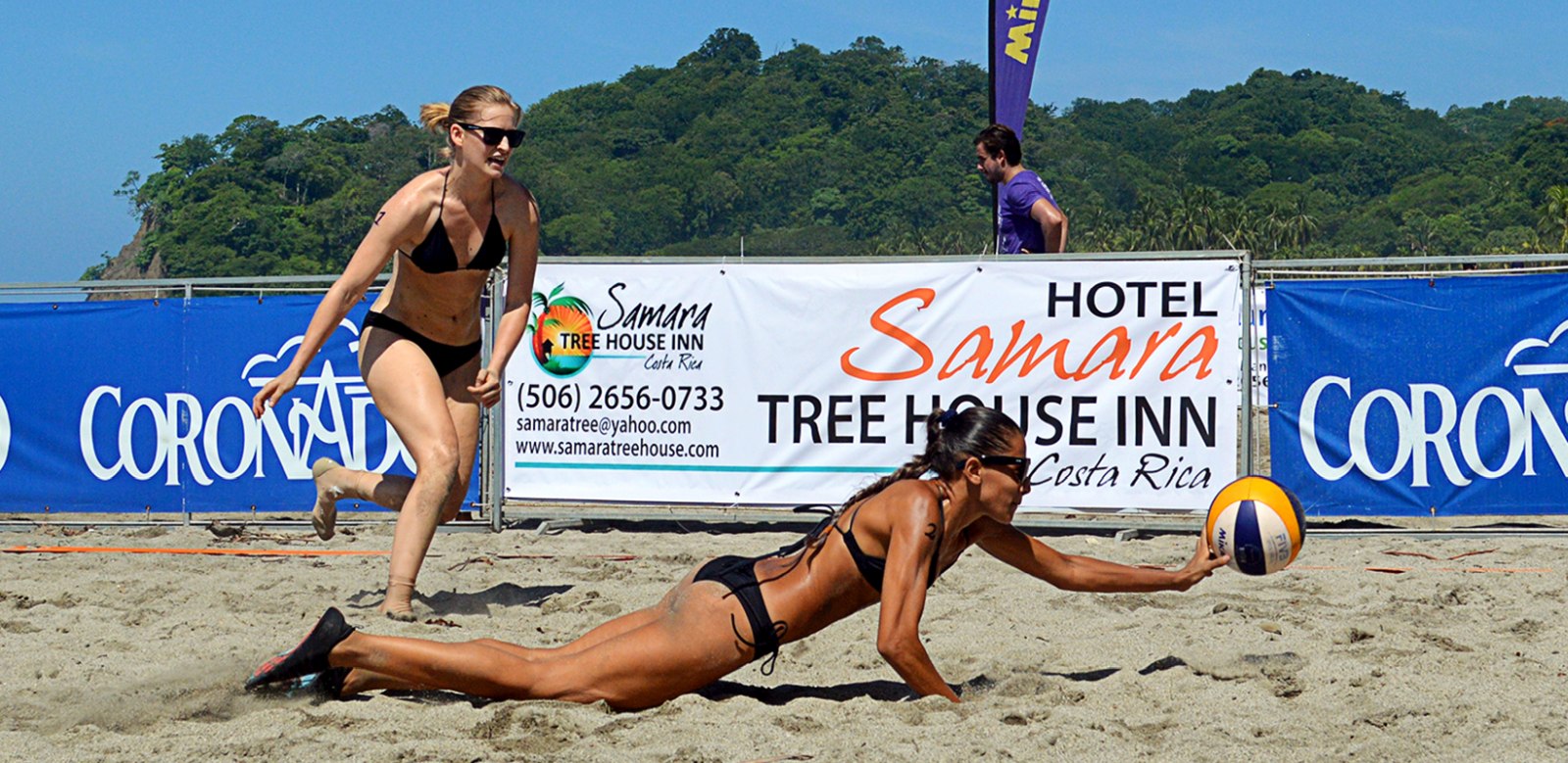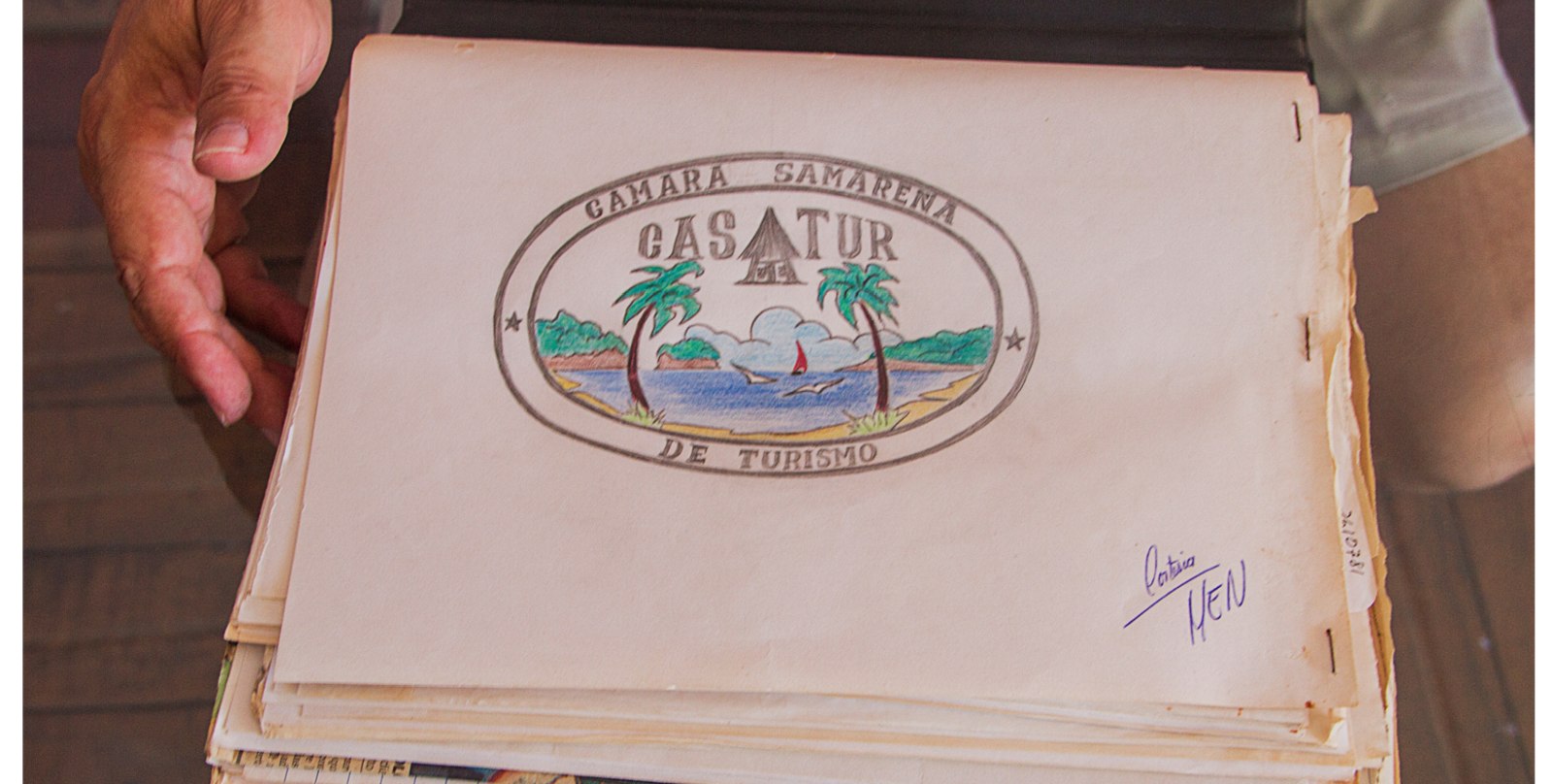
Mr. A. Mora lives in a cabina on the beach in Samara and makes a living playing traditional music and making Marimbas. He learned to play and make Marimbas from his father, here in the Canton of Nicoya, starting when he was just 7 years old. At age 59 he has a lot of skill and experience.
For those who do not know, marimbas are similar to xylophones, but are made up of a series of wooden bars. Each bar is cut and tuned to produce a specific note. Wood or metal resonators are attached to the base to make them sing. To play, the bars are struck with mallets. Traditionally the mallets have rubber heads on Guaitil wood handles. Mr Mora tells me the famous pottery center, Guaitil, was given its name because the area has the biggest concentration of Guaitil trees. It is used because it is strong but also very flexible. The bars themselves are cut from Costa Rican Rosewood (also called Cristobal pr Cocobolo). Non-musical parts are made of Balsa to keep the instrument light and transportable.
When Mr. Mora was young, business was pretty good. Marimbas are a traditional instrument of Guanacaste, as in much of Central America, and there was demand from musicians and families, who bought his smaller models for children to learn on and play at community and family events. Now that his skills are at a peak, demand is at an all time low because there are cheap mass produced aluminum versions available.
That is probably why Mr Mora only knows of only one other maker in Guanacaste who knows the traditional methods. None of his brothers pursued the craft. This is soon to be a lost art if something isn’t done to preserve it. The sad thing is that if people knew where Mr. Mora was and what he makes, he would have a new market that could include modern musicians, collectors of folk art and traditional instruments, and even some tourists who have an appreciation for something so very special. With prices starting at less than $200 for a hand crafted instrument I can’t believe he could not sell more. The problem is he only has access to the old customers and does not know how to reach out to his potential customers.
So how do we support Mr. Mora’s work and preserve his craft? I have a long list that can help this craftsmen and the many others like him that have created Samara’s rich heritage and the emerging generation of fine craftspeople and artists.
Education. Every child in Samara and every child who visits should have the opportunity to learn about the rich heritage of the area, and children love hands on, musical experiences. A small fund, or an occasional fundraiser to simply pay people like Mr. Mora and his peers to share what they know would be a huge benefit to the community.
Events. We have some great events here, like the Que Lindo Art Fair in January. There should be more and we need to be sure people like Mr. Mora are included. Even if he were just invited to play and we passed the hat around it would be a great addition to the fair and an opportunity for him. I also want say thanks to Valentino Loi for helping Mr. Mora and I communicate and to let people know that Valentino has a lot of skill in the events arena, having been an organizer of cultural events in London before coming to Costa Rica. He also speaks everything so he is an asset we are lucky to have here.
Media Coverage. The media, both in Costa Rica and world wide would be interested in the artisans of Samara IF information was easily available. A website with a few photos and a brief bio for each of our talented citizens would be a vehicle for getting the word out. Brenda and Chris at the Samara-Carrillo Information Center have been doing a great job of identifying tourist industry publications in which Samara needs a presence. Catherine Czerwinski is working to provide coverage of Costa Rica and Samara in an on-line international art publication. This blog has lead to other articles In The Voice of Guanacaste. It all helps and it will not take too much more effort to go a whole lot further.
Beautification Projects. Many businesses are including murals on their exterior walls, including Casa Del Mar Hotel, Samara Organics and Las Olas Super. Tell business owners that you appreciate what they have done and encourage others. Samara should look like what it is, a creative and talented community. The community mural on Super Samara’s wall is soon to get some professional touches to take it to the next level. Many thanks to Maliha Sanyal for getting it started and keeping the process going. You can help with donations of paint and brushes.
A Guide to the Artists and Artisans. A guide to the shops and galleries already here with a map should be available in every hotel and other businesses. Businesses need to cross sell and support each other if the community is going to attract the kind of visitors we all want. If it is updated monthly it could also include events and specials. Is anyone interested in working on one?
Pop-up Galleries. When space sits vacant it benefits no one, so I am hoping landlords will be willing to host temporary exhibits from time to time in the high season in their underutilized spaces.
There is a group meeting weekly to talk about art in general and the above ideas. We may also have sketching sessions from time to time. If you would like to participate, please contact me or Jaime Koss at the Koss Gallery located on the beach.
In the mean time wander down the beach and find Mr. Mora. See his instruments, buy one or maybe hire him to play at an event. It is a one of a kind opportunity you really shouldn’t miss and it is right here in Samara.







Comments